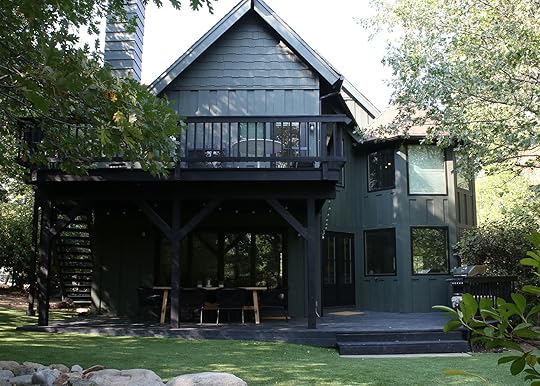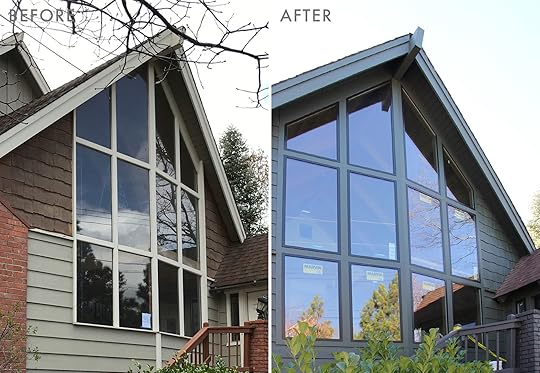How To Choose An Exterior Paint Color + Our Favorite Shades AND Combos


We may be an interior design blog… but today, we’re changing lanes and chatting exteriors. That’s right folks: this morning, it’s all about the CURB APPEAL. The weather is cooling down and many of us are heading into a long weekend, so what better time than today to lay out a plan for a nice lil’ exterior paint update?
But before we jump straight into the color recommendations, I wanted to share a quick process for planning that will save you BIG BUCKS as you decide on which samples are worth picking up and testing. Y’all, I learned a whole bunch about exterior paint — like, did you know that a color on brick will dry lighter than the same color on stucco or siding? I could write a whole lot more about why this happens (I definitely fell into a google-hole as I researched), but instead, I’ll offer the point: I have a couple of things to keep in mind that will help you hone in on the right color and will save you from buying a million tiny cans.
So in the interest in speeding up your decision-making process and keeping some dollars in your pocket… we begin with a quick guide. LEARNING IS FUN, RIGHT? (If you don’t need the primer, just scroll down a little bit. I won’t be *too* offended.)
Step 1: Study Your Home

I know that you know what your house looks like…but take a step back, and really give the ol’ girl a GOOD LOOK. Some questions to ask:
Is my roof warm-toned or cool-toned? If you have something black or neutral, the world’s your oyster! If you have a terra cotta roof, you may want to lean into warmer colors. If you’re rocking green- or blue-tinged shingles, consider sticking on the cooler end of the color palette. Also, take a second to peek at the fascia: is it visible? Do you want to paint that, too?Do I have any existing stone or brick? If you’re not planning on painting your masonry, you can’t go wrong by choosing a primary house color that corresponds with the undertones in the stone.What about tiles or pathways? If you’ve spent money installing concrete tile or a walkway to your front door, what color is it? This whole Q&A section really comes down to figuring out if you should be sourcing from warm-toned or cool-toned colors. (P.S. Paint is kind of like lipstick — there are still things like cool reds out there! You’re not cut off from a color just because it’s traditionally warm or cool — this will just help narrow down which part of the spectrum you should be picking from.) What I am actually painting? This is when it gets complex. How much are you changing? Shutters? Trim? Columns? Window mullions? The front door? It’s easy to make 2-3 colors across the house look professional. An example: If you want to keep your white mullions (or if they’re ingrained in your window), consider testing out a white house with black shutters and a green front door. Or vice versa! The options are endless — and if you really want to run with a whole bunch of colors, you can! — but it’s easiest to pick 2-3 colors and to run with them.
Step 2: Decide On Your Color Inspiration
THE FUN PART. You’re already here! This is easy, and I’m sure you already have a general idea in mind. Maybe you want to test out the dark exterior paint trend…or maybe you’ve always dreamed of a cute red cottage place…or maybe your Pinterest board is filled with bright white and blue homes in Santorini. Whatever your inspiration, take what you’ve learned about your house and finalize your dream plan (…in the abstract. We’ll get to picking actual colors next).
Step 3: Consider the Light
AH, LIGHT. The true trickster! Here’s the thing: painting outside is NOT EVEN A LITTLE BIT CLOSE to painting inside. I thought it was similar and I. was. wrong.
Let’s talk science: it’s outside. The light is way brighter and way more blue than you think. (Is this science? Am I doing it right?) So let’s say you’re scanning swatches online and you think you’ve stumbled upon the perfect light greige or a great bright white — I am here with the sad truth that those colors are going to pull way lighter (and blue-r!) outside.
A key tip: instead of buying every shade on a color swatch, try just picking up your favorite choice and the color that’s 1-2 spaces down. We’re going to get into some of our favorite tried-and-true picks below because it’s seeing paint in action is invaluable…but if you happen to fall in love with a picture, just keep our good pal THE SUN in mind.
The sun and your environment — like your yard, your garden, a pool, or any hardscaping — will change the way that light reflects. Imagine this: a color on a house in the middle of the sparse and golden Joshua Tree desert will pull drastically warmer than that same color painted in the middle of a lush green Oregon forest, because the light will be bouncing around the space differently. So many factors!
And for those with masonry — like I mentioned earlier, stones suck up paint in a whole different way! Priming stone with something like this will be key as you attempt to maintain color steadfastness — the brick will be able to absorb the primer instead of the paint, which will keep you from having a *slightly* mismatched house.
Step 4: Try It Out
CRITICAL STEP, obviously. While you can do the old EHD trick of painting samples onto watercolor paper and taping it up to your house, I’d recommend testing paint straight on the siding or stucco in question. You’re going to want to see how your exterior surface absorbs the color — these materials can be more finicky than their indoor counterparts — as well as how the samples stand up to any weather, like rain or dew.
You’re gonna want to keep an eye on those paint samples morning, noon, and night. (What’s more exciting than watching paint dry? Watching a whole bunch of dried paint that basically looks the same and trying to decide which is best!)
Step 5: Decide
If you’re having decision paralysis, it’s okay to phone a friend. Or, you can grab a trial to the Community and ask us! Or…if they all seem good and they’re just too similar…flip a coin. You were measured and thoughtful and smart in your planning and selection process — it’s going to look AMAZING. 
Emily Henderson's Blog
- Emily Henderson's profile
- 10 followers



